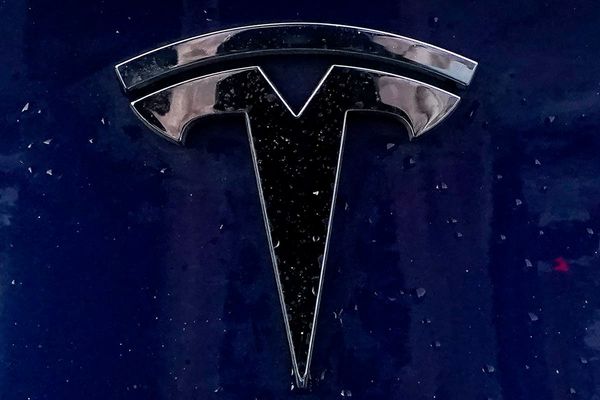
Exploring the greatest depths of the ocean is “safer than getting an elevator and safer than getting on an airplane” James Cameron has said. But the Canadian director of Hollywood blockbusters added that the team behind the recent ill-fated expedition to the Titanic lacked the imagination to engineer against the “most obvious risks” to any deep sea voyage.
In an interview with the Guardian, Cameron said that when he travelled to the Challenger Deep in the Mariana Trench – the deepest known point on the Earth – in a custom-made submersible, “we imagined just about every risk that was humanly possible – and we engineered against all of them.”
The staunch conservationist and Indigenous rights advocate also said his time traversing the deep sea had influenced his support for mining the sea floor, a controversial prospect that has seen a wave of opposition in recent weeks ahead of a key decision on the industry’s future.
Last month, the OceanGate Expeditions founder, Stockton Rush, veteran explorer Paul-Henri Nargeolet and three tourists ventured below the depths of the north Atlantic to view wreckage of the Titanic. The submersible, named Titan, lost contact with the surface more than an hour and a half into the journey, prompting a frantic international search and rescue effort.
Days later, debris from the submersible was found on the ocean floor and the US Coast Guard concluded that a “catastrophic implosion” had instantly killed everyone on board.
In the aftermath of the disaster, critics including Cameron have pointed to serious concerns over OceanGate’s use of a carbon-fibre hull.
“The things you can imagine being problems – and the obvious ones are implosion and pressure – you can engineer against or you can create processes and procedures to mitigate,” said Cameron, who has made 33 dives to the wreck site.
The veteran director said that conceptualizing risk is a key component of any journey to a region of the planet where minor equipment failure can prove catastrophic. He traces much of his perspective to time on the Nasa advisory council after the Columbia space shuttle disaster, which introduced him to a rigorous and methodical way of mitigating and anticipating risk.
“When you’re 25 years into the process of building vehicles to go very deep and you’re working with people that are experienced, you’ve pretty much seen almost everything that can go wrong,” he said. “It’s the risks, you can’t imagine – a piece of foam falling off the space shuttle and hitting the carbon leading edge of the wing. Nobody ever imagined that, so you can’t engineer against something that you can’t imagine.”

The fate of the Titan has driven renewed public skepticism over deep sea expeditions, especially those involving affluent tourists, and prompted fresh questions about the safety – and the purpose – of such vanity missions.
But Cameron says this focus ignores the thousands of hours of testing and engineering that go into ensuring submersibles are safe, he said.
“There have been no fatalities in the deep submergence community; zero. Zero fatalities, zero incidents where people were injured or where a sub was lost and had to be recovered by the coastguard in some big rescue operation. Zero in half a century,” he said. “But it takes one incident to wake everybody up.”
Cameron, who has completed more than 75 deep sea dives – including a voyage to the Challenger Deep, more than 10,000 meters (33,000ft) below the surface – says his time in rarely visited parts of the planet has swayed him in support of deep-sea mining, a controversial activity that has prompted concern among environmentalists and a growing number of nations.
“I’ve seen an awful lot of seafloor. And while there are some amazing creatures, they tend to be clustered in small habitats. What you mostly have is miles and miles and miles of nothing but clay.”
Until humanity can mine asteroids for their valuable metallic resources, Cameron said it was “far better” to mine the deep sea than in rainforests and more ecologically sensitive areas.
“As a staunch conservationist, I think it’s a question of the relativity of wrong here. What they’re doing in Indonesia and the Congo and the Amazon and Peru, Chile is wrong,” he said, conceding he was an “outlier” when it came to his views on the push for deep-sea mining. “To do it in the abyssal seafloor, where there’s very little in the way of a rich and diverse community, I think is less wrong.”

Last week, Canada joined a number of European countries, scientists, environmental organisations and even car manufacturers such as BMW and Volvo, and the battery maker Samsung, all of which have pledged not to use deep-sea minerals in their vehicles. Seafood groups representing a third of the world’s tuna trade also this week called for a pause on deep-sea mining.
In June, the European Academies Science Advisory Council warned of the “dire consequences” for marine ecosystems if plans for deep-sea mining went ahead. Experts have concerns about sediment plumes, noise, vibration and light pollution as well as possible spills of fuels and other chemicals used in the mining process. In May, scientists announced 5,000 new species were discovered in the Clarion-Clipperton Zone, the very space targeted by deep-sea mining companies.
But Cameron, who is credited with discovering a new species of sea cucumber and squid worm, says society has a “weird habit of blowing the wrong thing out of proportion” when it comes to these debates.
“Mining highly sensitive and highly diverse habitats is a very, very different thing from mining in the abyssal seafloor.”
Cameron has spent time with Indigenous communities and biologists fighting to protect biodiversity that is vanishing at an alarming rate. An acre of rainforest, which might have nearly 20,000 species in it, is being destroyed every second to make way for agriculture and extractive industries.
“The impact on actual human beings, on actual Indigenous cultures that are being destroyed, their tribal lands are being destroyed, the habitats that they require to survive are being destroyed … it’s pretty horrific.”
For most of human civilization, societies have worked to extract everything they can from the land, “ripping up habitats left and right, chopping the tops off of mountains” in the pursuit of valuable resources, he says.
“All of a sudden we’re gonna grow a conscience when it comes to habitat?”







